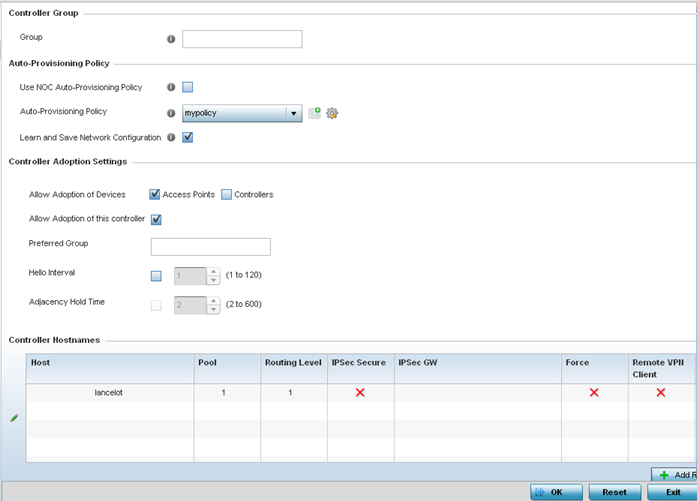Manage Profile's Adoption Configuration (Controllers Only)
About this task
Adoption is the process a controller or service platform uses to discover available access points and/or peer controllers/service platforms, establish an association and provision the requesting device. Adoption settings are configurable and supported within a profile and applied to other access points supported by the profile. Individual attributes of an access point‘s auto provisioning policy can be overridden as specific parameters require modification.
At adoption, an access point solicits and receives multiple adoption responses from controllers and service platforms available on the network. These adoption responses contain loading policy information the access point uses to select the optimum controller or service platform for adoption. By default, an auto provisioning policy generally distributes AP adoption evenly amongst available controllers and service platforms. Modify existing adoption policies or create a new one as needed to meet the adoption requirements of a device and their assigned profile.
To define a controller or service platform‘s adoption configuration:


